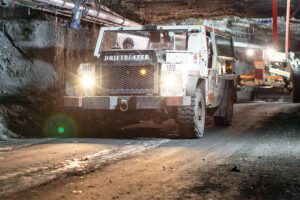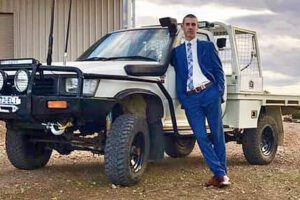When it comes to hiring a safety officer or manager for a site, there are many things that hiring managers must take into consideration to ensure their workers are kept safe. Link Resources’ Angela Bradby writes about hiring the right safety professional.
Anyone who has hired the ‘wrong person’ for a position within their company will know from experience that it is a costly mistake. A bad hire drains energy, time, and money. When you consider the productivity, financial, reputation and morale costs that result from hiring the wrong person it is a no-brainer to ensure that the recruitment process is strategically planned and well-executed to avoid this mistake. Finding the right safety professional for your business is critical. Ensuring you select a candidate with a balance of the right experience, skills, competency and the right fit in terms of personality and attitude will be fundamental in ensuring the success of the position and may have a significant impact on the way in which safety is perceived in the business. There are currently no specific industry standards or guidelines regarding the hiring of safety professionals, this article provides some advice on how to hire the
‘right’ safety professional.
THE RIGHT BUSINESS STRUCTURE
Set your new safety professional up to succeed by ensuring the business structure enables them to achieve the outcomes you set and create a positive safety culture within the organization.
Consider, for example, whether the current reporting structure allows the new hire to work effectively with:
- Human Resources: on organizational culture or climate issues, return to-work programs and training, to change employee behaviours, influence managers, share tools and technology, improve legal and regulatory compliance and boost employee morale.
- Planning and Design: with the focus on controlling safety risks from the outset of any project.
- Operations: to ensure that productivity and safety do not compete but work hand-in-hand.
- Environmental: on handling and storing hazardous materials, indoor air quality issues, training, and regulatory compliance.
CANDIDATES EXPERIENCE
Selecting a candidate with experience as a safety professional in the resources sector is fundamental in ensuring the likelihood of a successful hire is high. In recent years safety professionals were so sought-after that mining companies often had to employ people from other industries with no mining experience. In the present market resource companies are unlikely to have this problem.
When evaluating a candidate’s work experience, focus on the aggregate amount of experience devoted to safety advisor/manager positions and the performance of the core functions of the safety position. Some jobs with ‘safety’ in the title actually have minimal safety-related responsibilities and some roles without the word ‘safety’ have significant safety responsibilities.
I would strongly recommend a safety advisor (with minimal oversight) would need five years’ safety experience. A safety manager would benefit from ten years’ experience, of which three years’ experience is in a coordination or management role responsible for managing and mentoring safety advisors and/or administrators. In the current market this is reasonable and achievable.
THE RIGHT SKILLS
It is critical that the person you hire has the skills you require to adequately perform as a safety advisor/manager. Ask candidates
to include details of their responsibilities of previous roles. Ensure all duties/key performance indicators of the role you are recruiting for, per the job description, have been performed by the candidate in their previous roles. This can be ratified by conducting thorough reference checks with previous employers and/or by providing samples of their work.
Asking the candidate to provide writing samples in the technical subject area of the position to demonstrate their competence in this area will give you a better insight into the level of skills and knowledge the candidate possesses. Having the candidate present on a key safety topic will also give the recruiter a more thorough understanding of the capabilities of this potential employee.
Assuming the recruiter/manager is able to provide enough information about the current status of the company’s safety management system, the work environment and the culture of the business, along with a detailed Position Description, it would be reasonable to request the candidate compile and submit a draft planning document.
Asking the candidate to put together a plan of what they hope to achieve in the first 90 or 120 days in the role is a good way to gain some understanding of how they manage simultaneous projects along with the day-to-day functions of the safety advisor/manager role. Obviously it will have to be fine-tuned as they learn more upon commencement but there is certainly value in getting it started at the recruitment phase.
COMPETENCY OF THE CANDIDATE
In the past, a safety advisor with a Certificate IV in OHS/WHS and safety managers with a Diploma in OHS/WHS have been employed and able to demand high salaries. As the market has tightened up and more good safety professionals are available for the roles that do become available, the level of competency employers are seeking is higher. Many employers are now only considering safety advisors with degree-level qualifications and safety managers with postgraduate or masters-level qualifications.
Currency of competency is also very important and should not be overlooked. Ensure you determine if the candidates have recently completed safety-related continuing education courses to stay current on new legislation, emerging issues and new developments.
Personality type testing by a qualified psychologist can give a unique insight into the inner workings of a safety professional and how they would assimilate into the culture of your organisation.
THE RIGHT FIT
Potential employers should consider how a safety manager or a safety advisor will fit into the organisational culture, which will be largely dependent upon their personality traits and attitude. One of the most challenging parts of a hiring manager’s job is determining whether or not the candidate has the attitude to effectively operate in the business.
What is attitude? It includes such things as interest in the job, ability to work without constant supervision, ability to think ahead of the game, taking a positive view of things and wanting to contribute. Some of these things can be measured or estimated during the hiring process.
Personality type testing by a qualified psychologist can give a unique insight into the inner workings of a safety professional and how they would assimilate into the culture of your organisation. A number of off-the-shelf personality test exist and can provide some insight. Psychologists that specialise in pre-employment profiling may be more costly but also tend to be far more effective.
Well-thought-out questions for referees are a great way to gain some insight into the candidate’s personality and attitude. Some key questions to ask may be:
- Did the candidate need constant supervision?
- How much time did their previous manager have to spend keeping the candidate focused on the job?
- How often the candidate came to them with problems they could not solve?
- How often did they make excuses for not meeting KPIs or deadlines?
- Did the employee have issues working with their peers, subordinates or managers?
As an external recruiter, I believe it is imperative that I invest some time at the outset with the employers’ management team to gain a thorough understanding of the companies culture, where the business is headed and what they want from the position they are recruiting. This enables me to understand what they want in a new employee in terms of skills and attitude. Once I have gained an insight into the culture of the business, the team dynamics and the position they are looking to fill I am able to build a profile of the ideal candidate and conduct a focused recruitment campaign. The investment of time initially pays dividends in the end, as the likelihood of selecting the right person for the role is considerably higher. When hiring for your company the same thing can be done and the results will speak for themselves.
By developing and implementing a strategic recruitment plan for finding the right safety professional, whether internally or by engaging an external recruiter, you increase the likelihood of hiring someone who will succeed in the position. It is then important to retain these key people – if you look after your employees they will look after you business. Hire for attitude, train for skills and look after your people so they never want to leave.
ANGELA BRADBY
Link Resources
Angela Bradby has over 13 years experience in the resources industry, including more than 10 years in the oil and gas industry. She founded Link Resources in 2013 after identifying a need in the market for an end-to-end Human Resources service business that actually understands and can meet the demands of the resources sector and heavy industry.














Add Comment